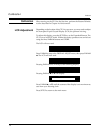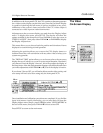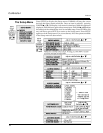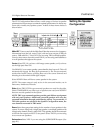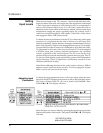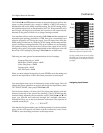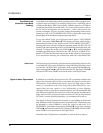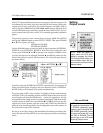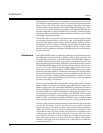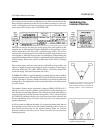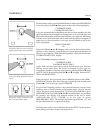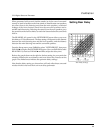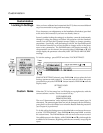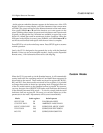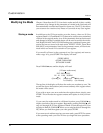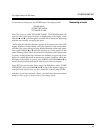
26
Lexicon
Calibration
In the absence of an SPL meter, it is possible to set the output level by ear.
Use the built-in signal generator in the CP-3 to adjust all volumes to be the
same as they cycle around the various speakers. Depending on timbre
variations between your speakers, this may be difficult to judge, get as close
as you can. The system should be reasonably well balanced, although not
actually calibrated for precise playback level matching. With the system
volume at 0dB, the internal noise source should be at the same level at which
film dialog sounds comfortable.
NOTE: If the CP-3 is connected in the tape monitor or signal processorloop
of a preamp, integrated amp, or receiver, or if any of the amplifiers used in
the system have gain (volume) controls, the level settings on them will affect
the balance of the CP-3 outputs. Generally, the gain controls of these amps
should be set at or near maximum. You should record the values of these
controls on the Installation Worksheet provided at the end of this manual
for later reference.
The SUBWOOFER output is created by summing the left and right inputs,
then filtering out frequencies above 80Hz at a rate of 24dB per octave. For
the tragically technical, this is a Linkwitz-Riley LPF -6dB @ 80Hz. Many of
the better subwoofers have their own crossover (complementary low and
high pass filters) and amp built in. With these, it is often better not to use the
CP-3 SUBWOOFER output which has already been filtered. Instead, con-
nect the CP-3 main (FRONT) left and right outputs to the inputs of the
subwoofer crossover. Connect the CP-3 SUBWOOFER output to the ampli-
fier driving the main speakers. This has the advantage of bi-amping: all the
low bass is handled by the subwoofer; the main speakers handle only mid-
bass and up (usually resulting in better-sounding main speakers). If you
want to run the main speakers full range, the sub can be wired in parallel to
the main amp using a Y-connector.
Be sure to turn the 80Hz HPF in the Speaker Config menu to OFF. Since the
center channel will now be running full range, select SMALL center in the
Speaker Config menu. This turns on the BASS SPLIT parameter in the Preset
modes, splitting low frequencies off the center channel and feeding them to
the left and right front outputs. Remember to adjust this parameter in any
User registers you program, as it is initially set to BYPASS. A little experi-
mentation goes a long way in determining the optimum value for BASS
SPLIT. Usually, a cutoff between 63Hz and 140Hz is best. Too high a cutoff
will make some male vocals sound chesty; too low a cutoff causes bass loss.
Now the center channel is rolled off and the main left and right are crossed
over by the subwoofer. You do not need to be as concerned with the
surrounds because the Dolby encoder rolls off most of the bass below
100Hz. Some films, however, do have substantial LF information in the
surrounds and the CP-3 music modes do not limit low frequencies at all.
(Although the effects channels are typically using less than 25% of the
power used in the mains.) Unless you plan on very high sound pressure
levels and want lots of bass, most systems will not require subs on these
channels. Obviously, the most efficient way to add subs is to utilize the
crossover in the CP-3.
Subwoofers



